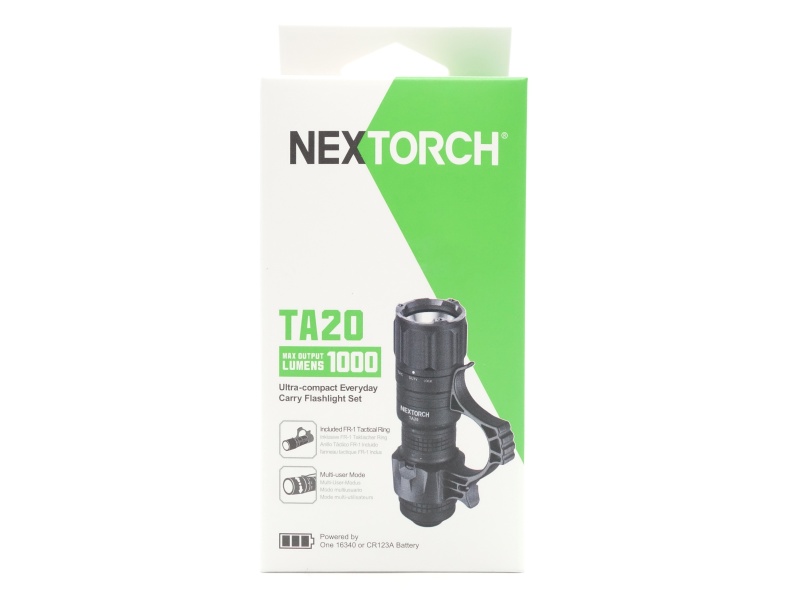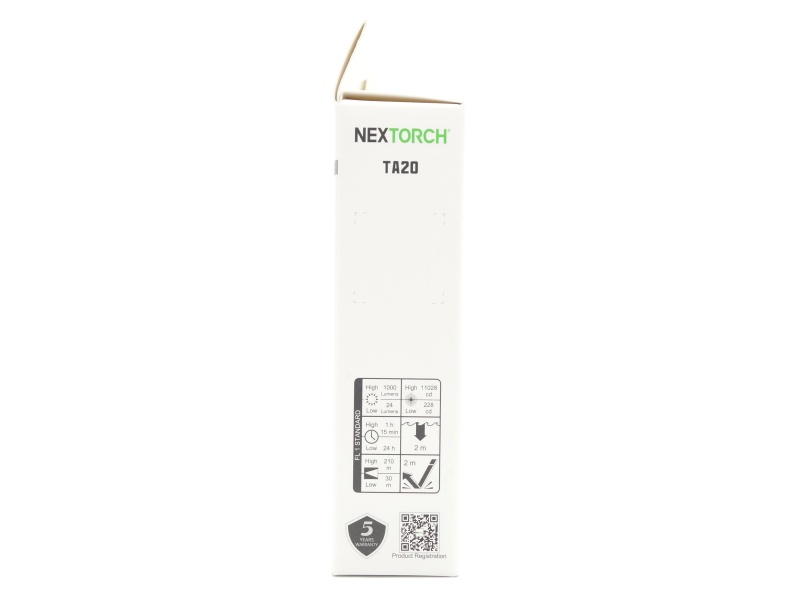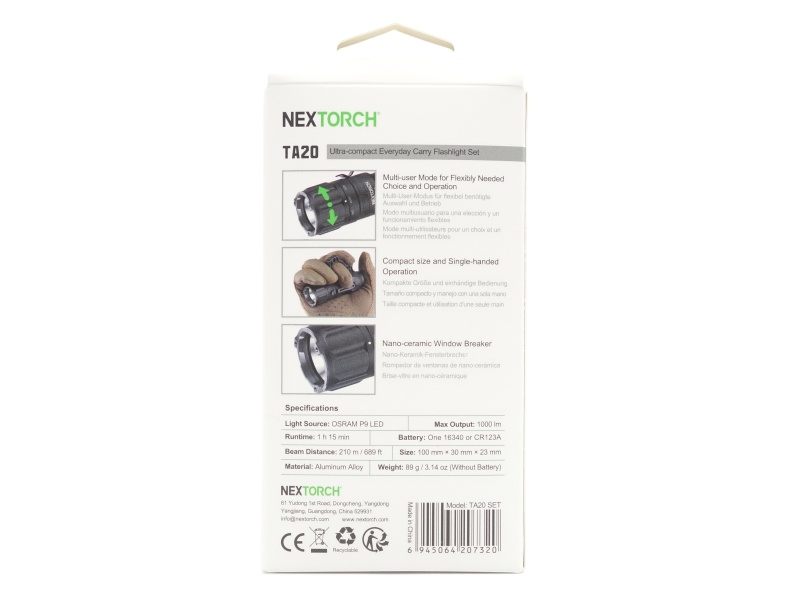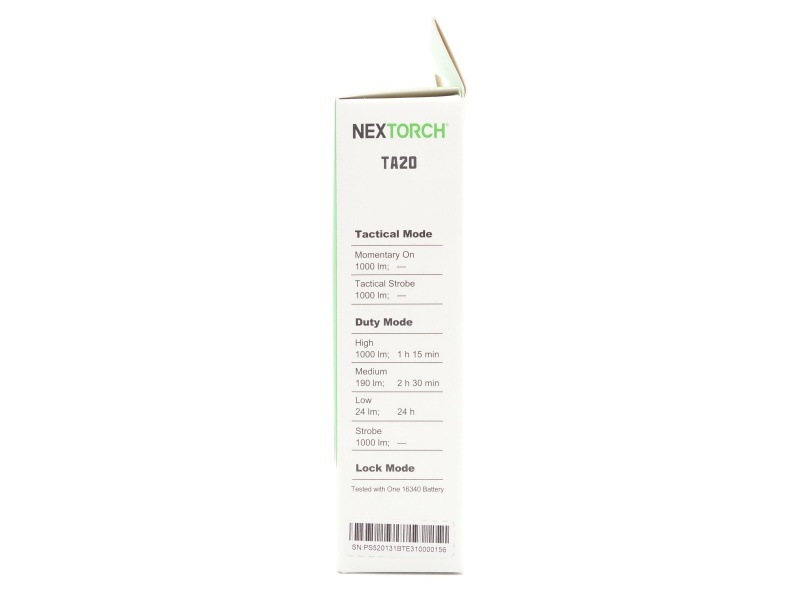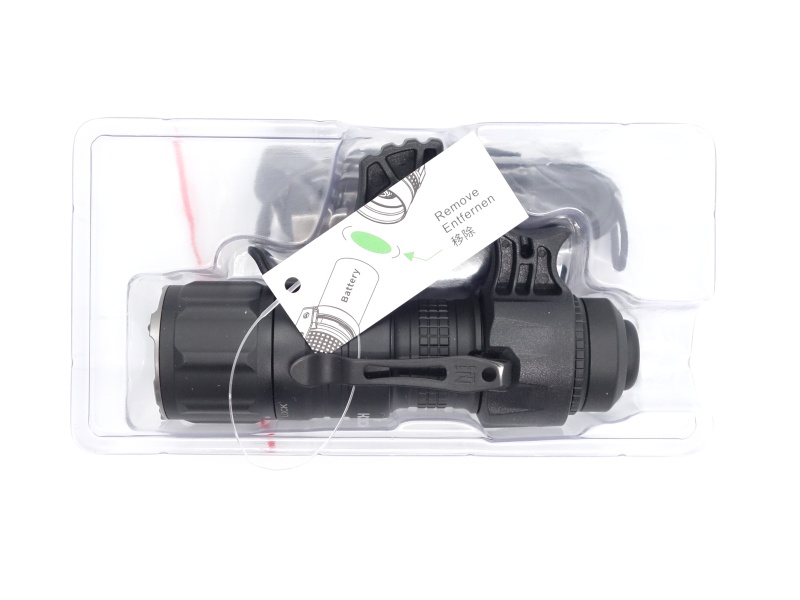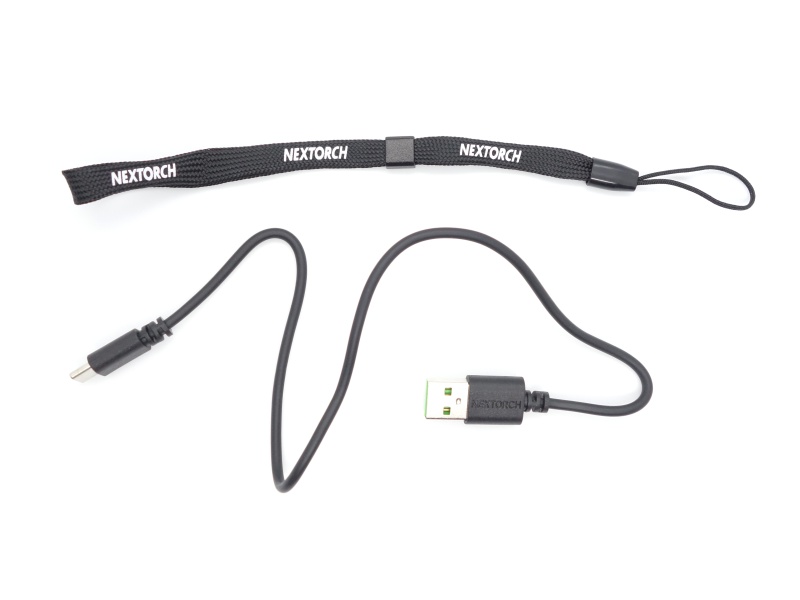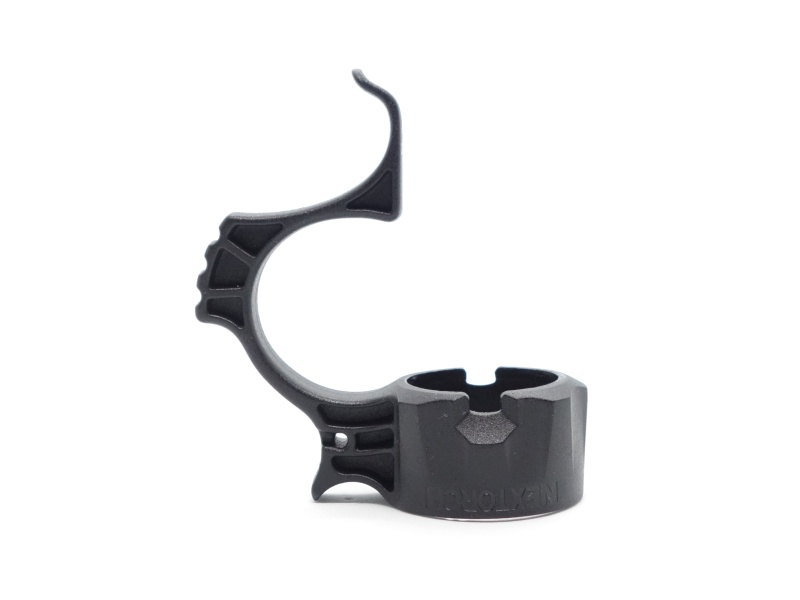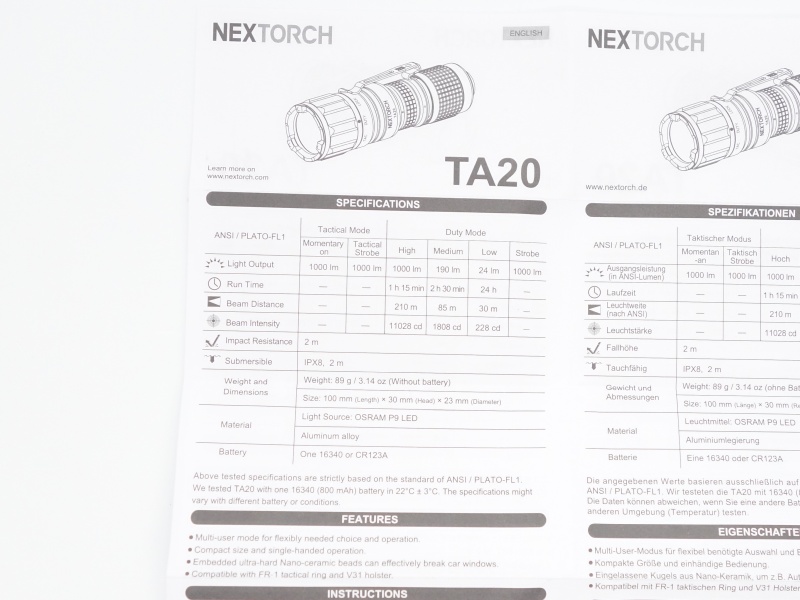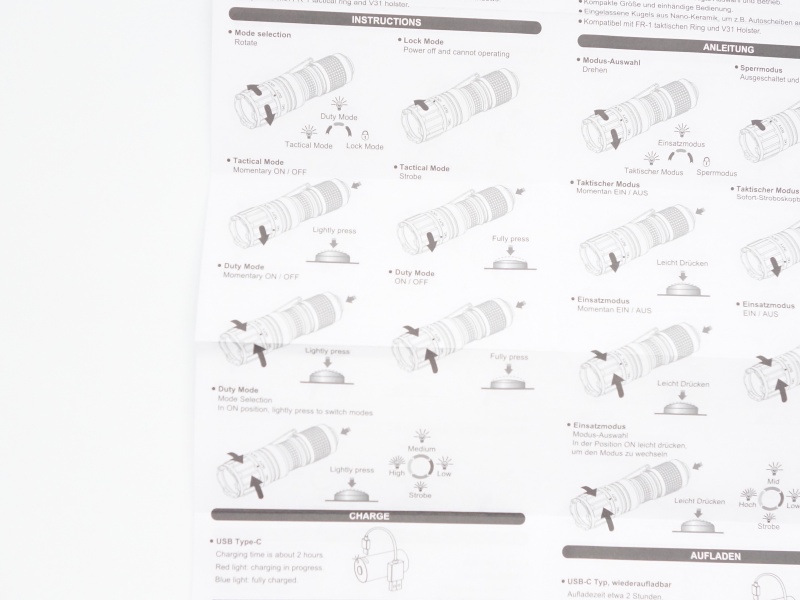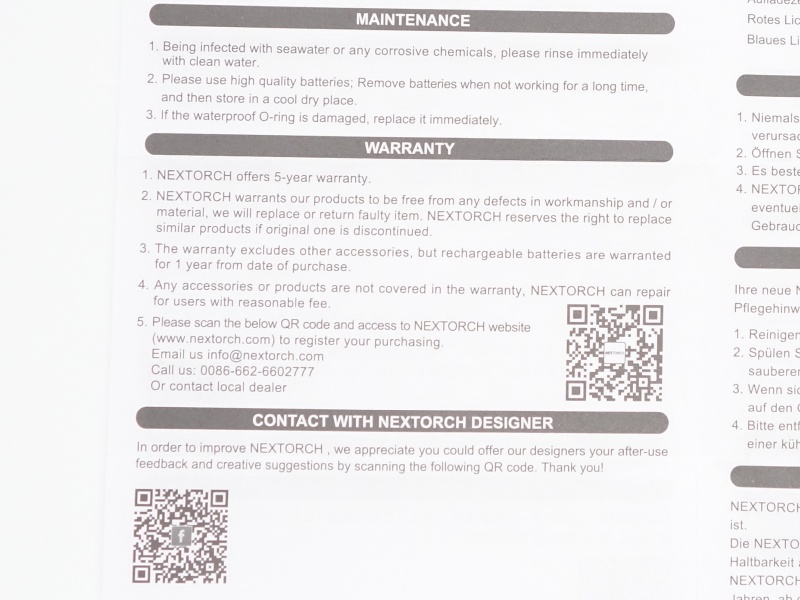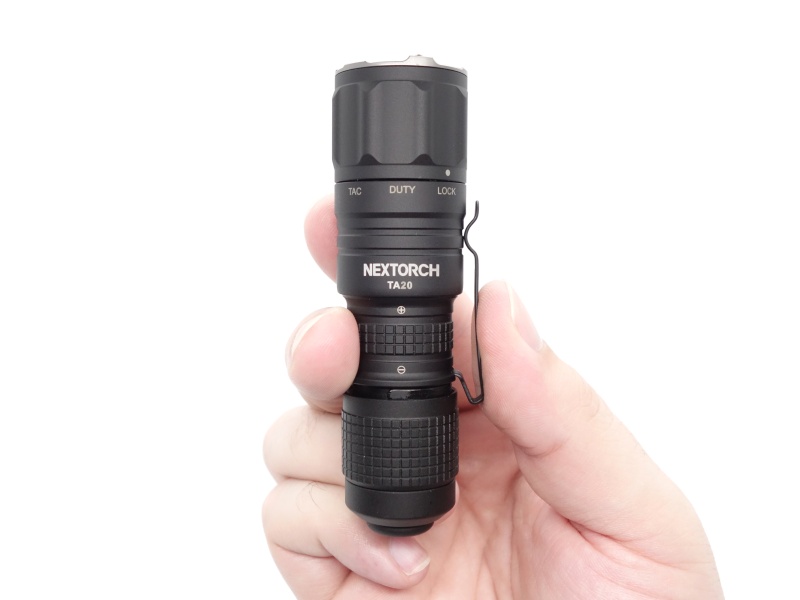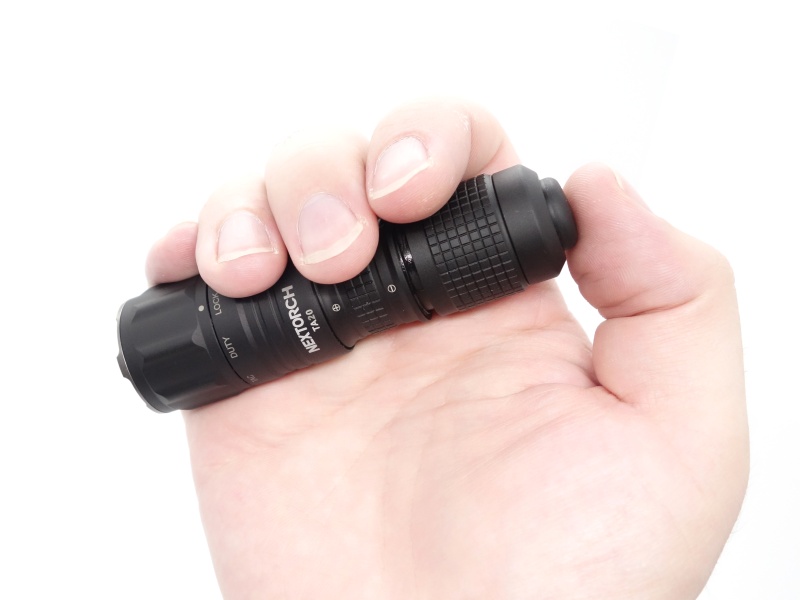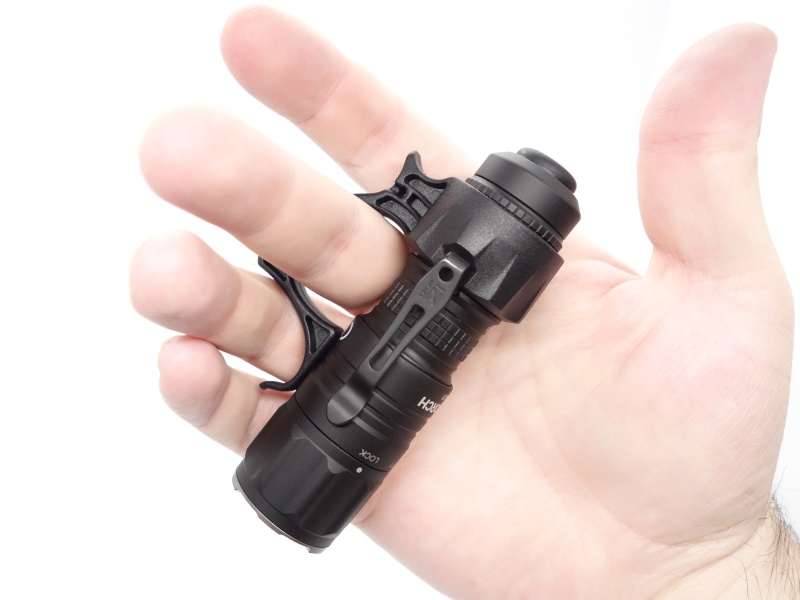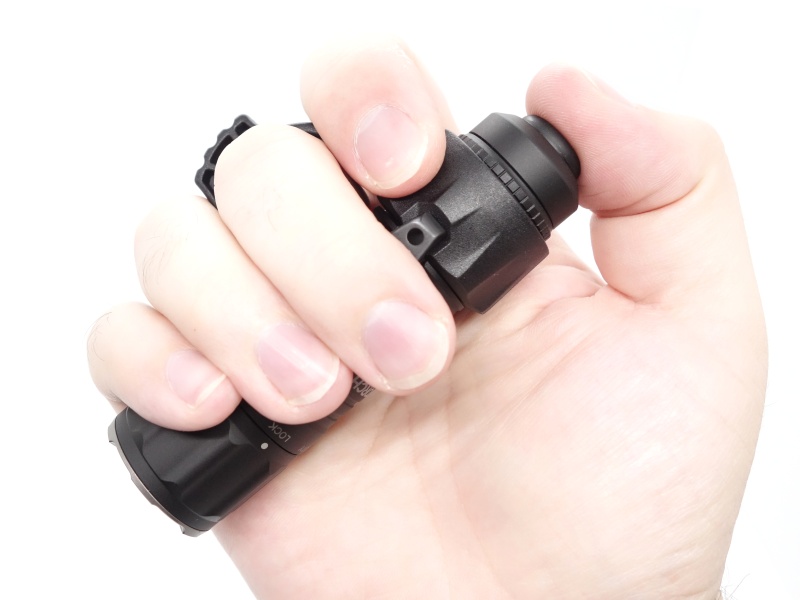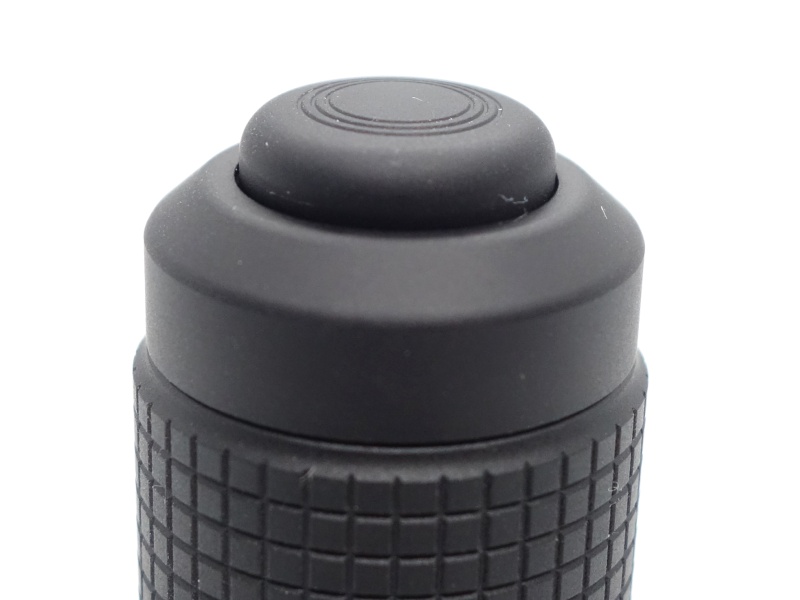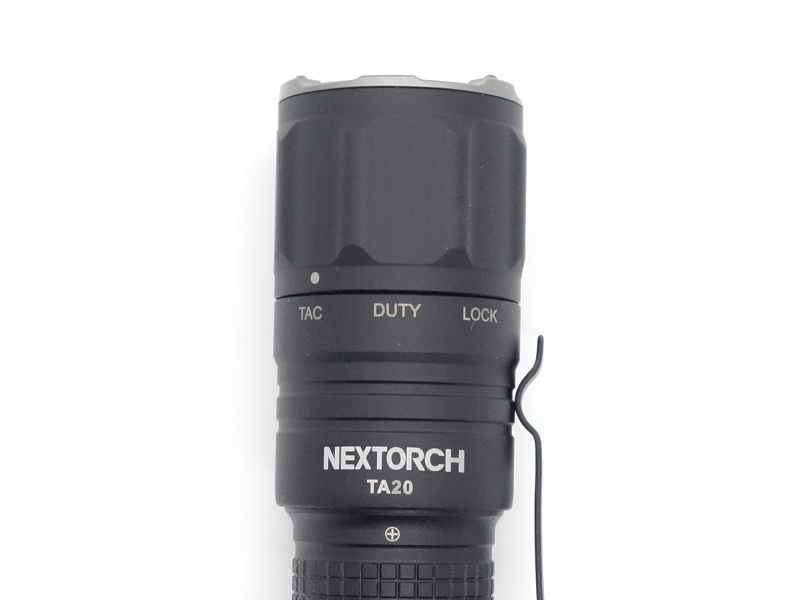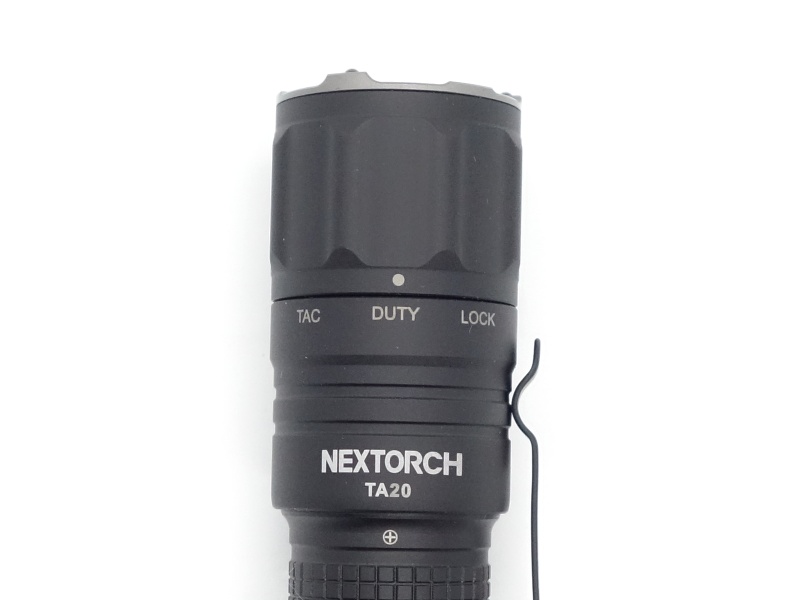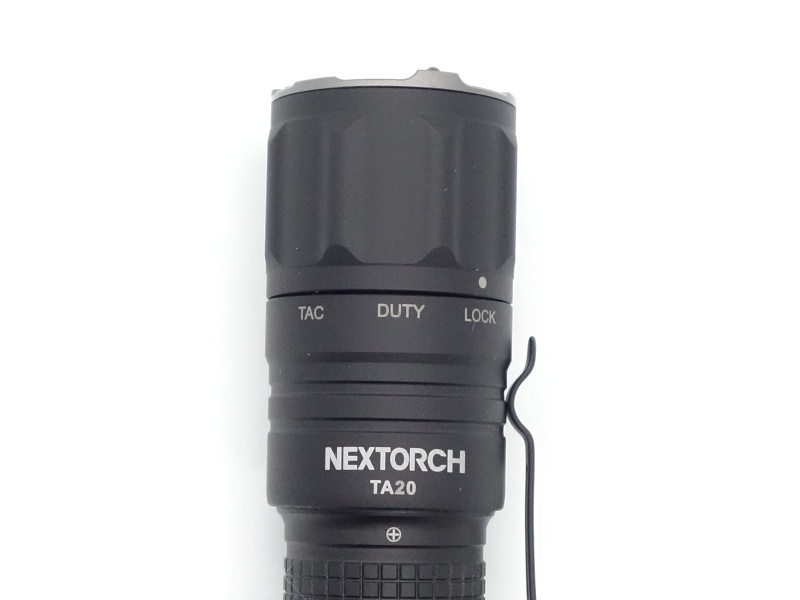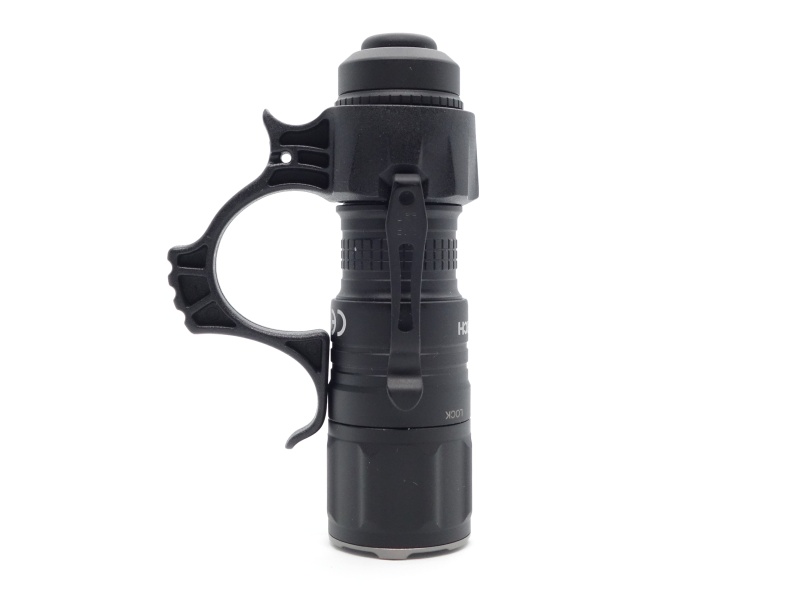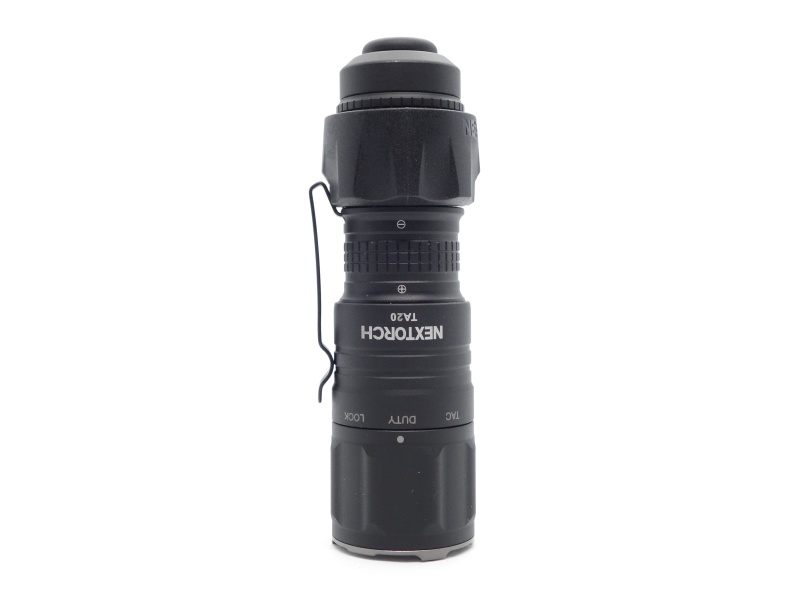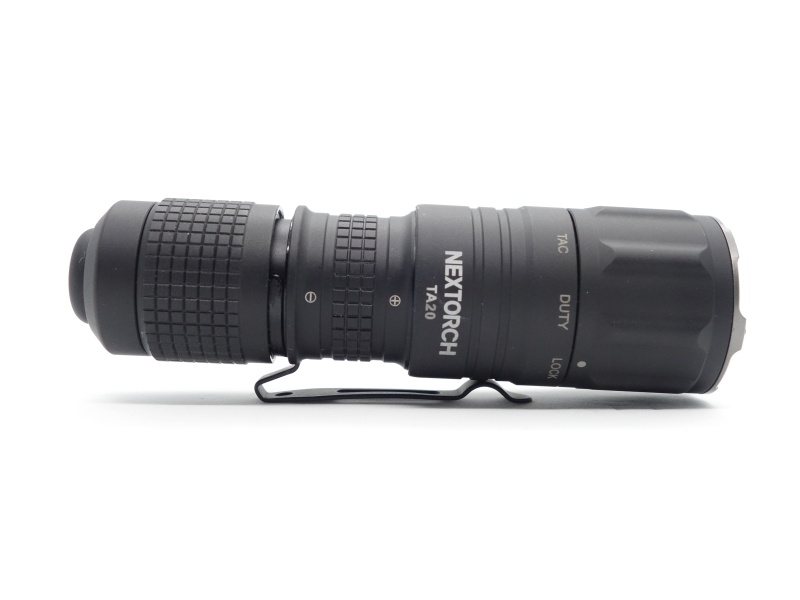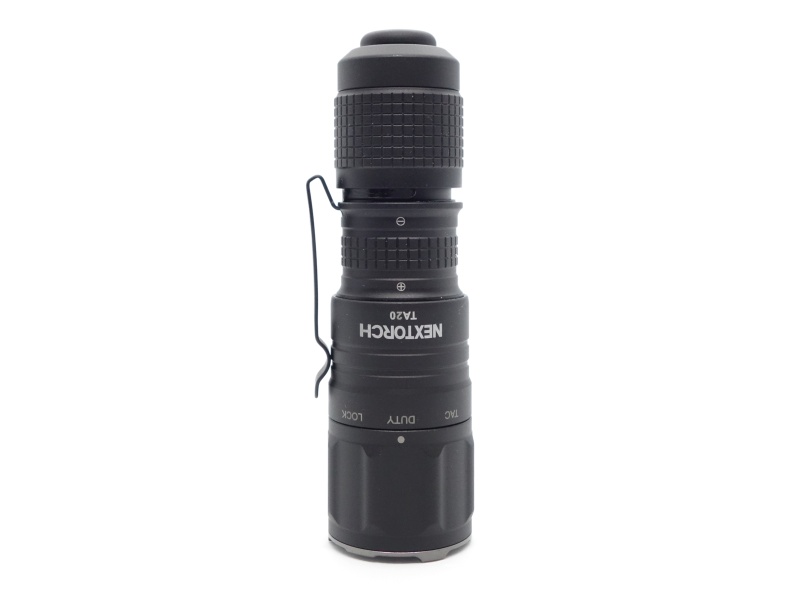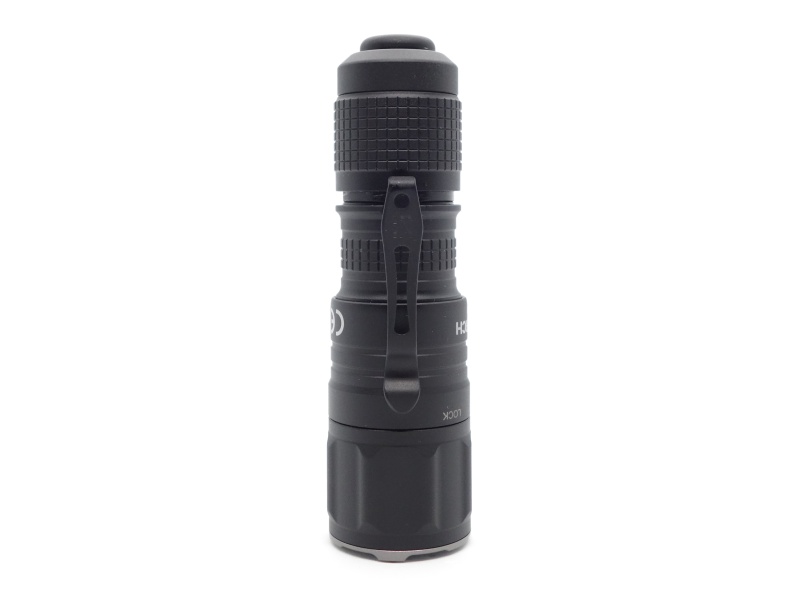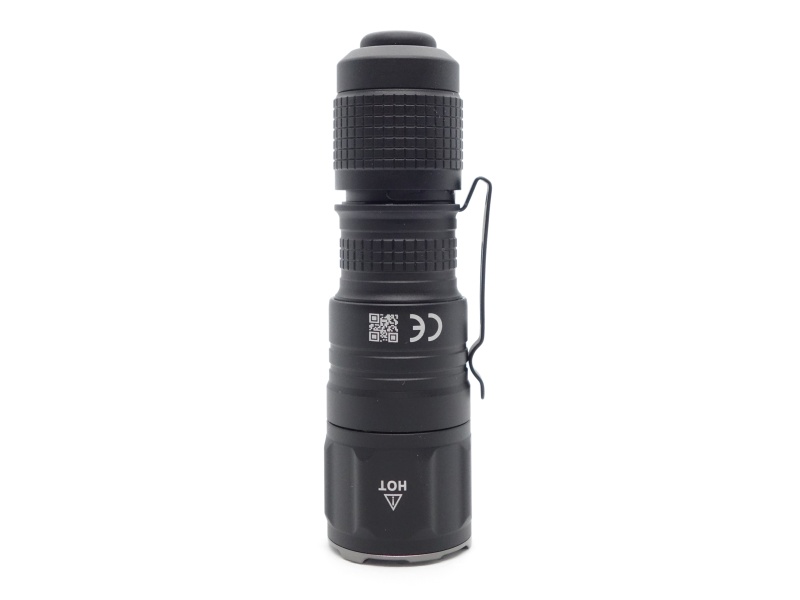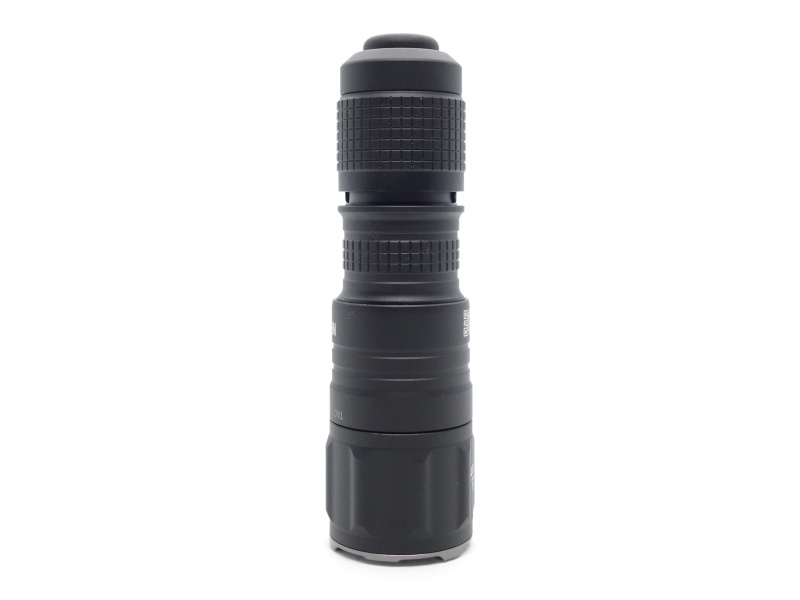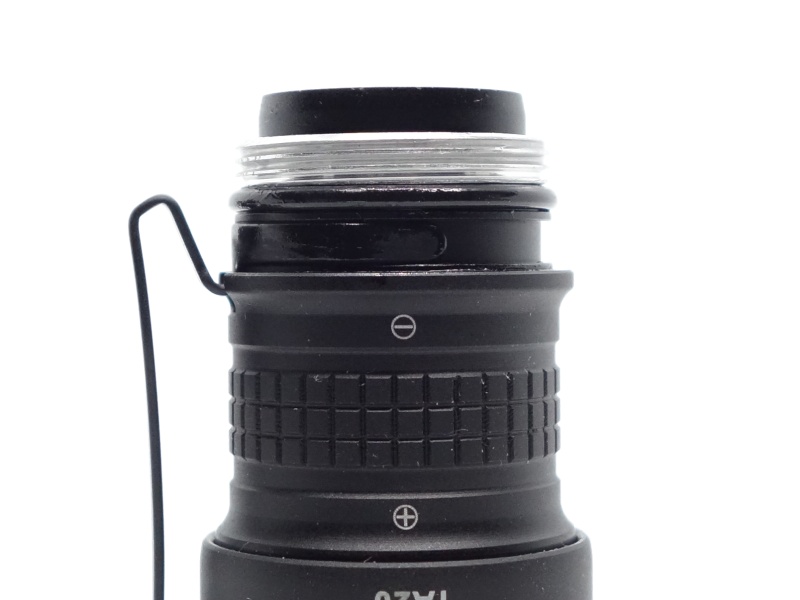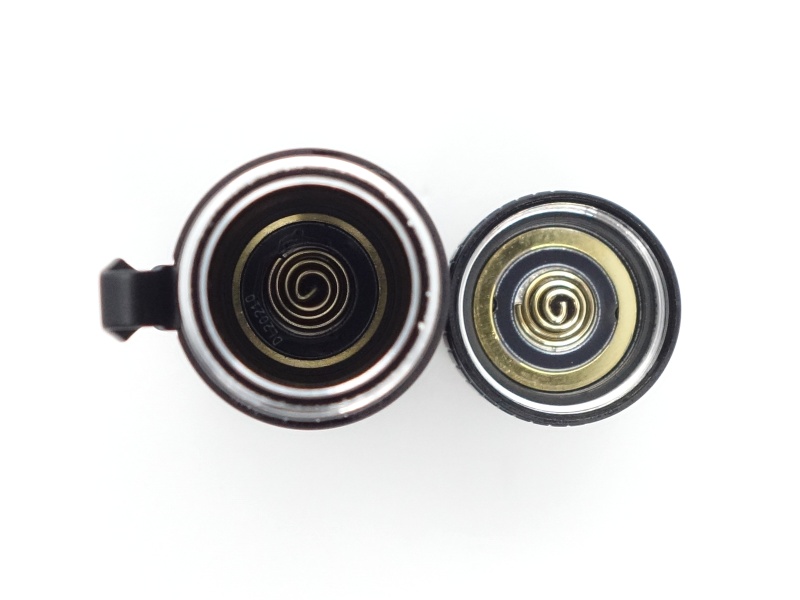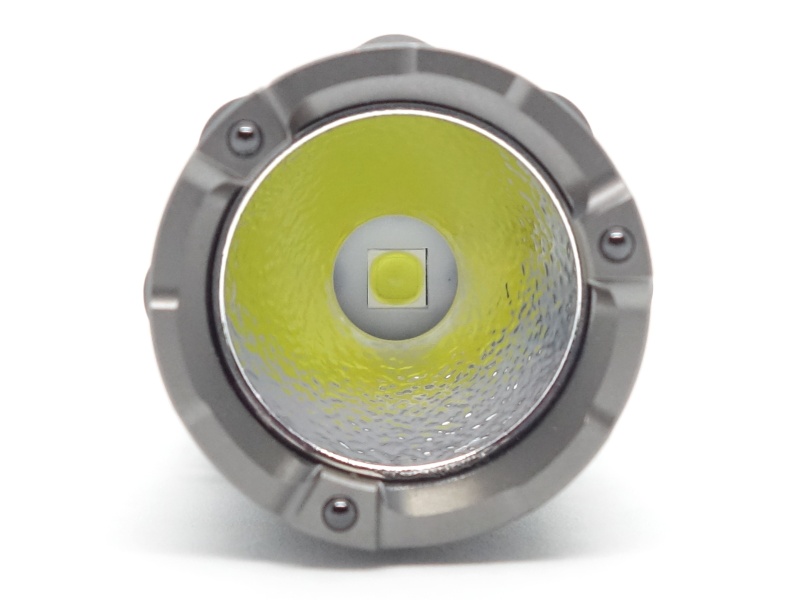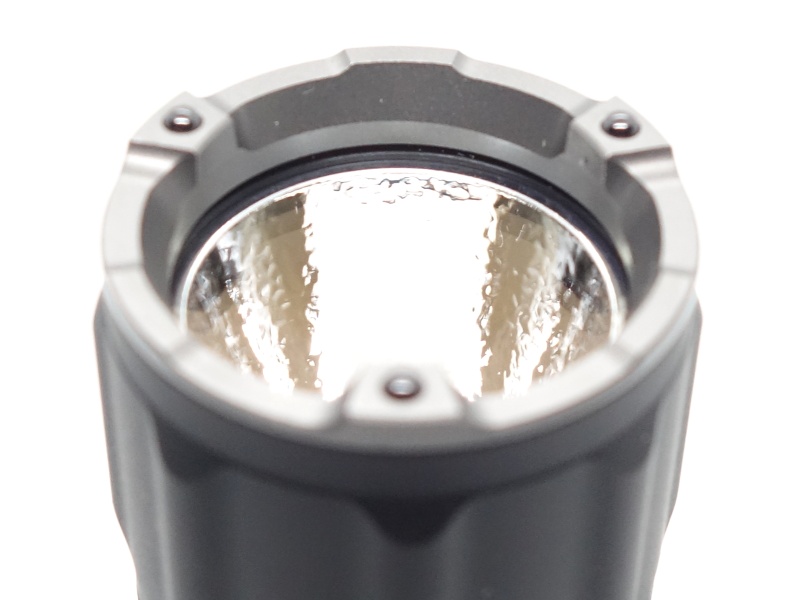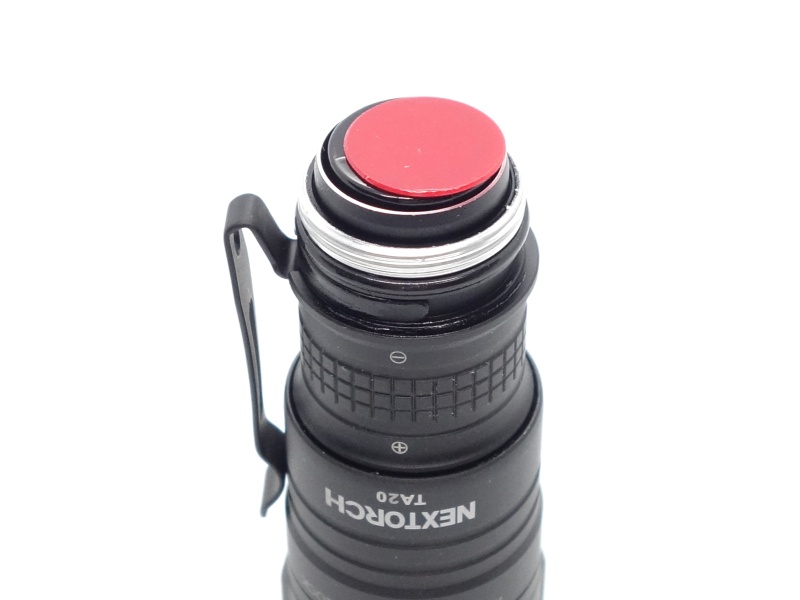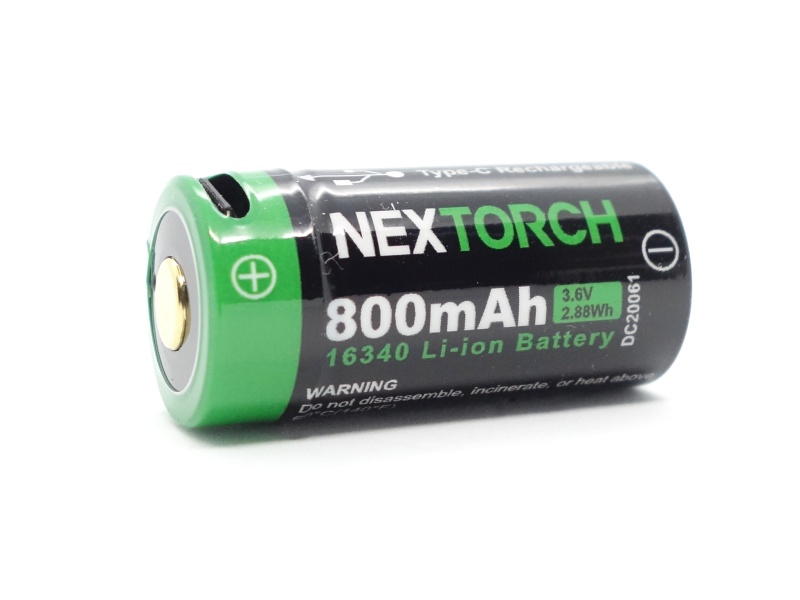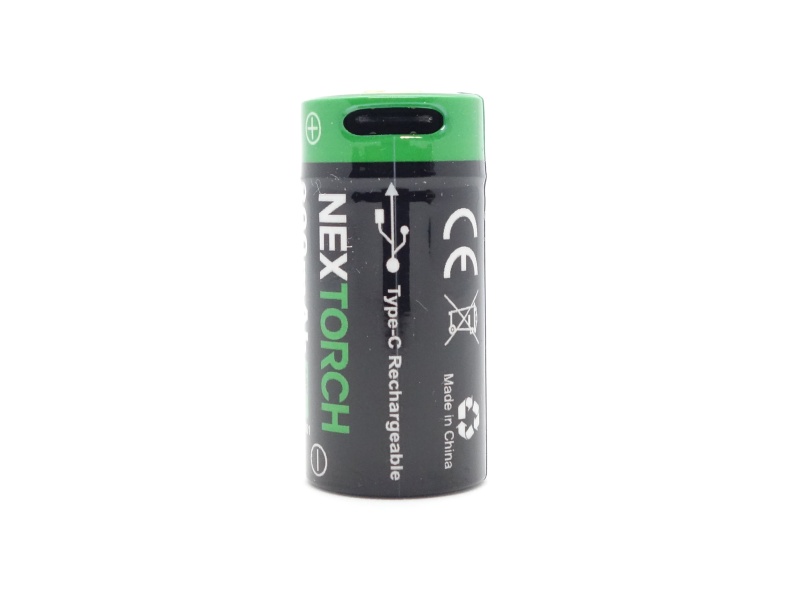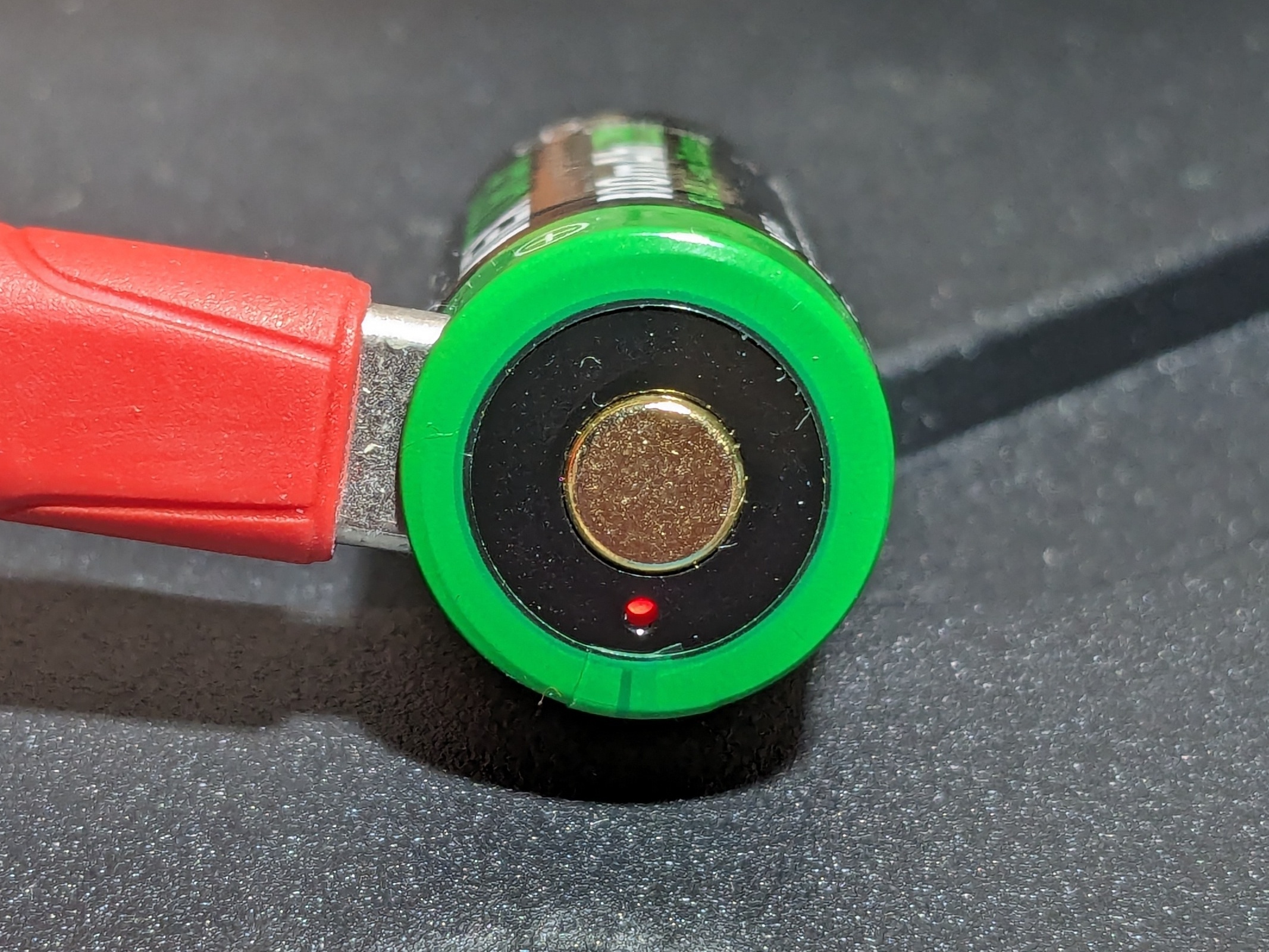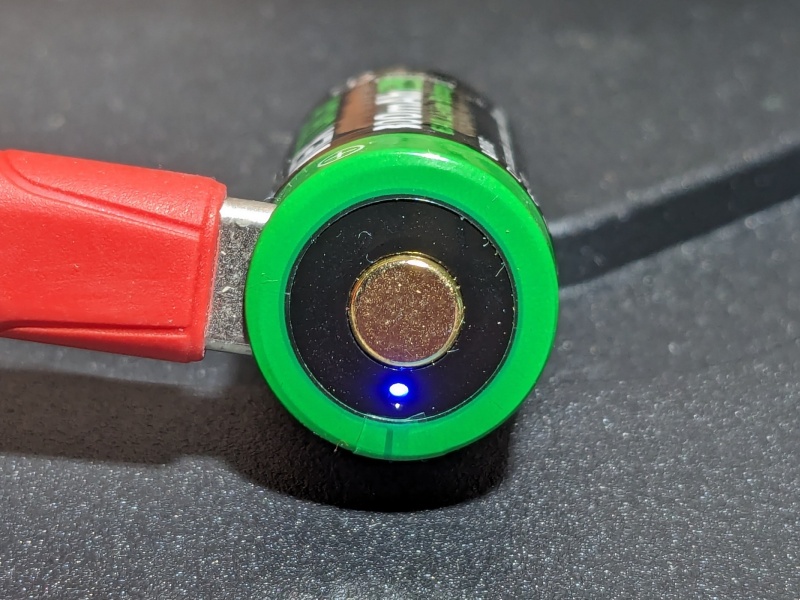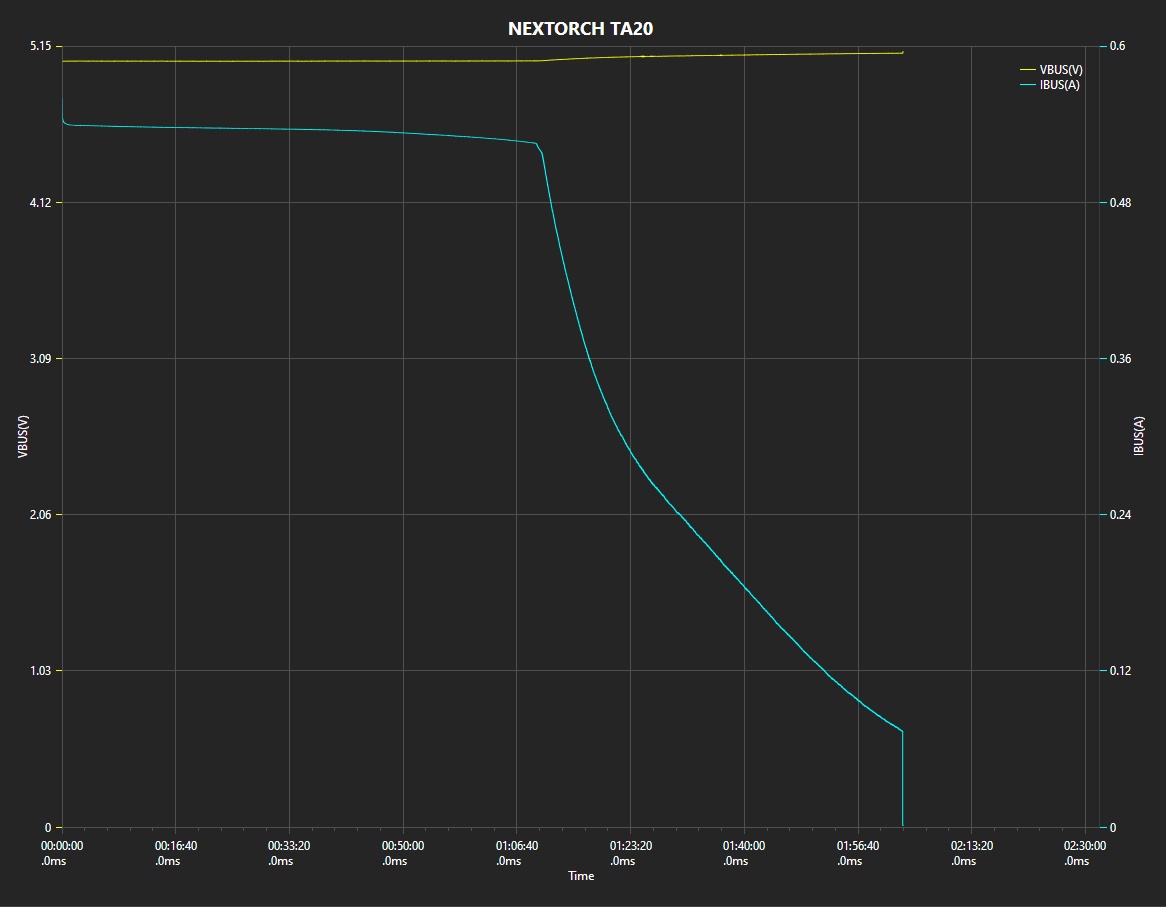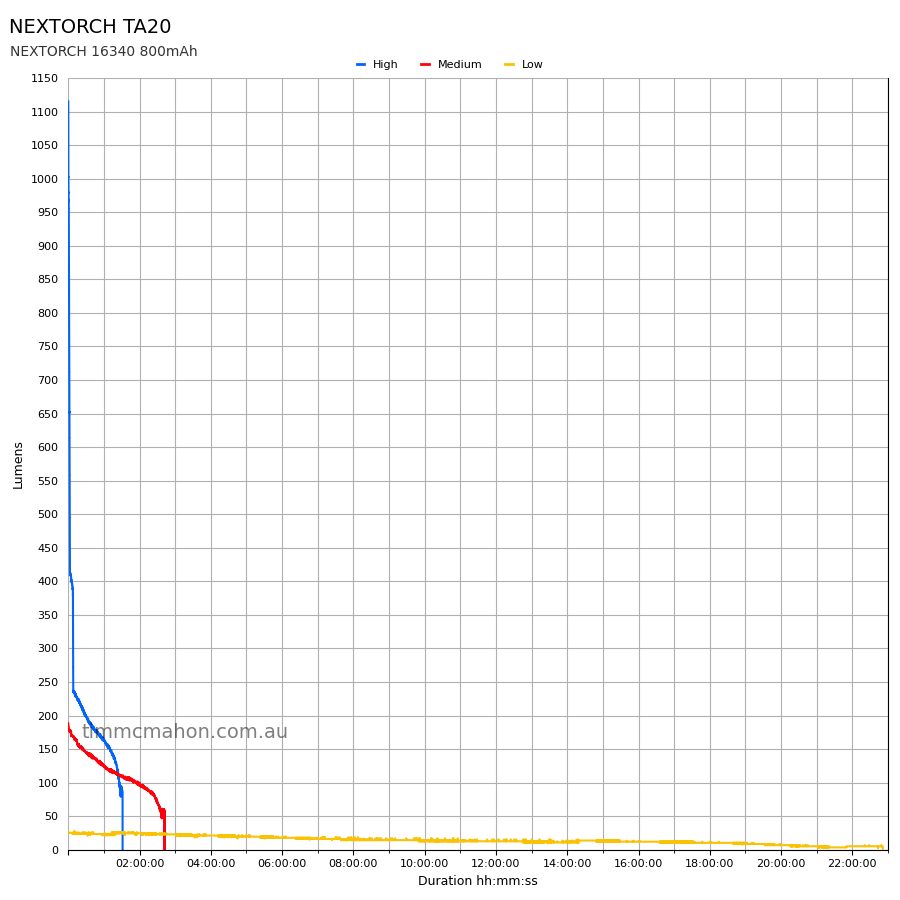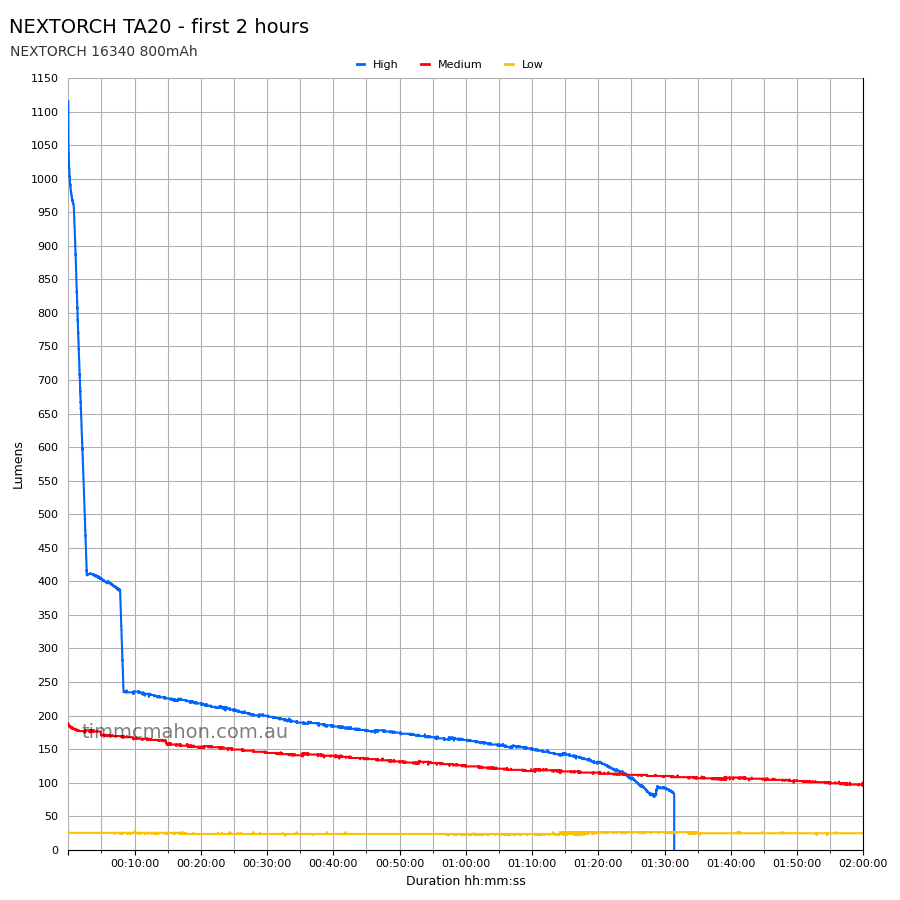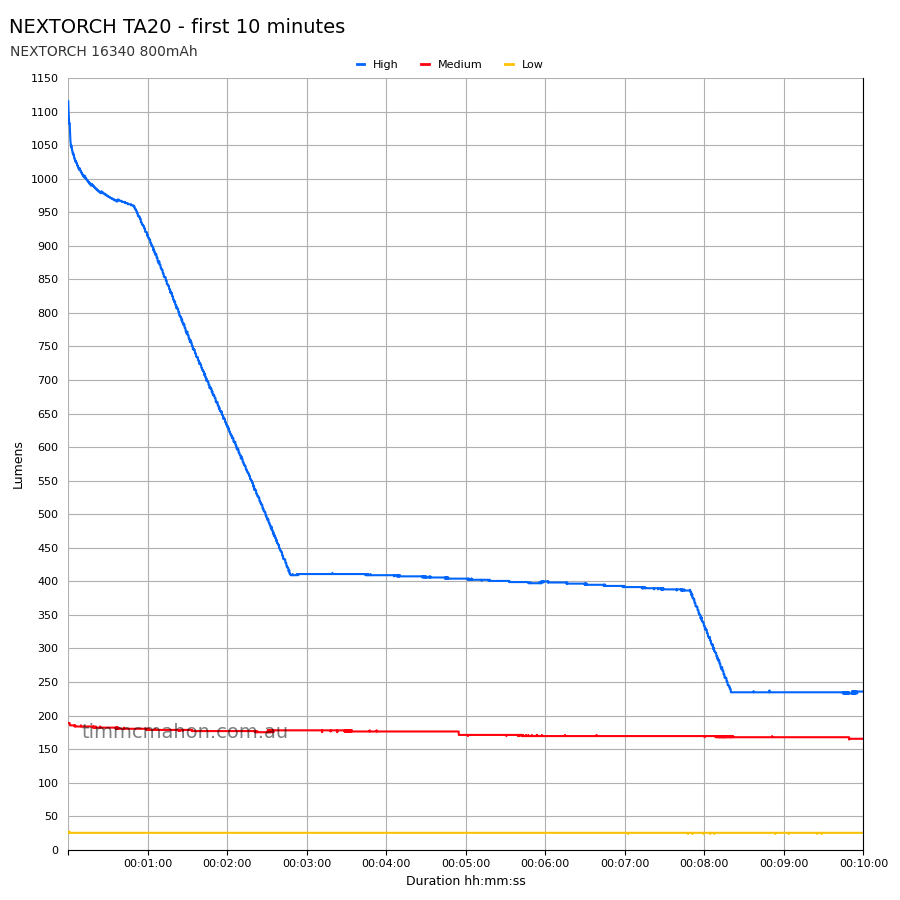NEXTORCH TA20 Tactical Torch Review
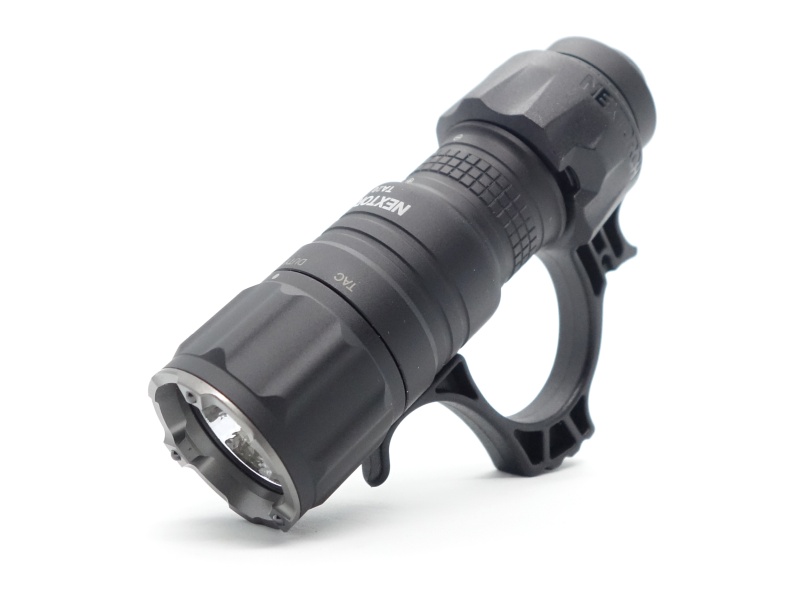
NEXTORCH TA20⌗
- Specifications
- Introduction
- Torch in use
- Build quality
- LED, bezel, lens, reflector and beam
- Size and comparison
- User interface
- Batteries and charging
- Performance
- Beamshots
- Conclusion
- Price
- Product page
Specifications⌗
| Brand/model | NEXTORCH TA20 |
|---|---|
| LED | OSRAM P9 |
| Maximum lumens | 1,000 lm |
| Maximum beam intensity | 11,028 cd |
| Maximum throw | 210 m |
| Battery | 1*16340, 1*CR123 |
| Onboard charging | No (USB-C battery) |
| Material | Aluminium |
| Modes | 3 |
| Blinkies | Strobe |
| Reflector | OP |
| Waterproof | IPX8 |
| Review date | January 2024 |
Introduction⌗
The NEXTORCH TA20 is a compact tactical torch with: a two-stage tail button, a rotary mode selection switch, a tactical ring, a pocket clip and a strike bezel with three nano-ceramic beads.
It has a cool white OSRAM P9 emitter.
It can be powered by the included 16340 Li-ion cell or a CR123 battery.
NEXTORCH kindly sent this torch for review. I have not been paid for this review nor have I held back my opinions of this torch.
Packaging⌗
The TA20 comes in a white and green box with NEXTORCH branding.
The following was included in the box:
- NEXTORCH TA20
- NEXTORCH 16340 800mAh USB-C cell
- USB-A to USB-C cable
- Lanyard
- FR-1 tactical ring
- User manual
Torch in use⌗
The NEXTORCH TA20 is so cute! The matte finish feels nice and the torch fits my hand perfectly.
The two-stage tail button provides instant access to High when lightly pressed in Tactical or Duty modes.
The rotary switch at the head allows Tactical Mode, Duty Mode or Lock Mode to be selected.
This torch appears to be intended for law enforcement and military as a backup light (or for those who want to reduce the amount of weight that they are carrying).
It has been designed to be compatible with the FR-1 tactical ring and the V31 holster (as shown in my review of the NEXTORCH TA30C).
The pocket clip and the tactical ring are both securely held in place by the tailcap.
There is a hole in the pocket clip and a hole in the tactical ring where a lanyard may be attached.
The V31 holster is probably a bit big for the TA20. It will fit but you might be better off clipping the pocket clip to a vest instead and saving the holster for a larger torch like the TA30C.
Build quality⌗
The NEXTORCH TA20 is constructed of aluminium. The body has a dark gray matte anodised finish on both the outside and the inside. The torch feels smooth and there are no sharp edges.
The threads came lightly lubricated and they turn smoothly. I found it easier to screw the tailcap on when the tactical ring had been removed. A bit of force is required to get the tailcap on when the tactical ring has been installed.
Springs at both ends allow a slightly shorter unprotected 16340 cell to fit.
The inner tube is used for the tail button.
LED, bezel, lens, reflector and beam⌗
The NEXTORCH TA20 has an OSRAM P9 emitter with an orange-peel reflector.
It has a strike bezel with three nano-ceramic beads for striking glass. These three beads protrude into the edge of the beam (as seen in the beamshot).
The bezel can be unscrewed to gain access to the emitter should you want to swap the 3737 OSRAM P9 with something else. I demonstrated how to unscrew this type of bezel in my review of the NEXTORCH TA30C MAX.
CCT, CRI, and duv⌗
I have taken Correlated Colour Temperature (CCT) and Colour Rendering Index (CRI, RA of R1-R8) measurements with the torch positioned one metre away from an Opple Light Master Pro III (G3).
The CCT is around 6473K. The CRI is around 70.
The Delta u, v is slightly positive (green).
The beam has a white hotspot, a slightly green corona, and a slightly purple spill. The beads create some shadows around the edge of the beam. The beam itself is quite throwy and it creates a wall of light on High.
| Mode | CCT (K) | CRI (Ra) | x | y | Duv |
|---|---|---|---|---|---|
| Low | 6485 | 70.6 | 0.3127 | 0.3316 | 0.0045 |
| Medium | 6469 | 70.3 | 0.3129 | 0.3326 | 0.0049 |
| High | 6465 | 70.5 | 0.3129 | 0.3326 | 0.0049 |
Calculate Duv from CIE 1931 xy coordinates
Dimensions and size comparison⌗
Dimensions⌗
I took the following measurements using a digital caliper.
| Measurement | Unit (mm) |
|---|---|
| Length | 101.3 |
| Head diameter | 30.0 |
| Tail diameter | 25.38 |
| Tube inside diameter | 16.96 |
| Tactical ring inside diameter | 25.7 |
| Battery diameter | 16.7 |
| Battery length | 35.1 |
Weight⌗
I took the following measurements using a digital scale.
| Weight | Unit (g) |
|---|---|
| Torch | 90.64 |
| Battery | 18.89 |
| Tactical ring | 9.37 |
| Torch with battery | 109.53 |
| Torch with battery and tactical ring | 118.9 |
Size comparison with its competition⌗
From left to right: NEXTORCH TA20, Olight Warrior Nano, Sofirn SC21
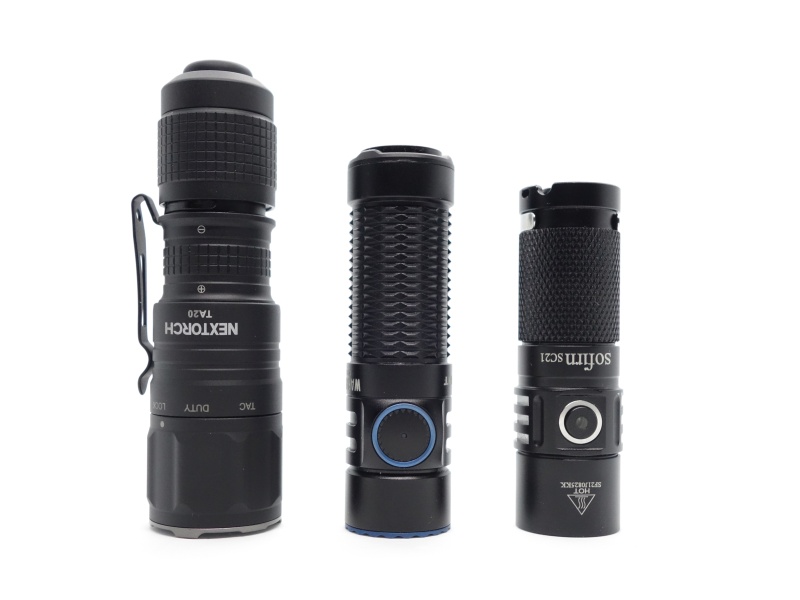
From left to right: NEXTORCH TA20, Olight Warrior Nano, Sofirn SC21
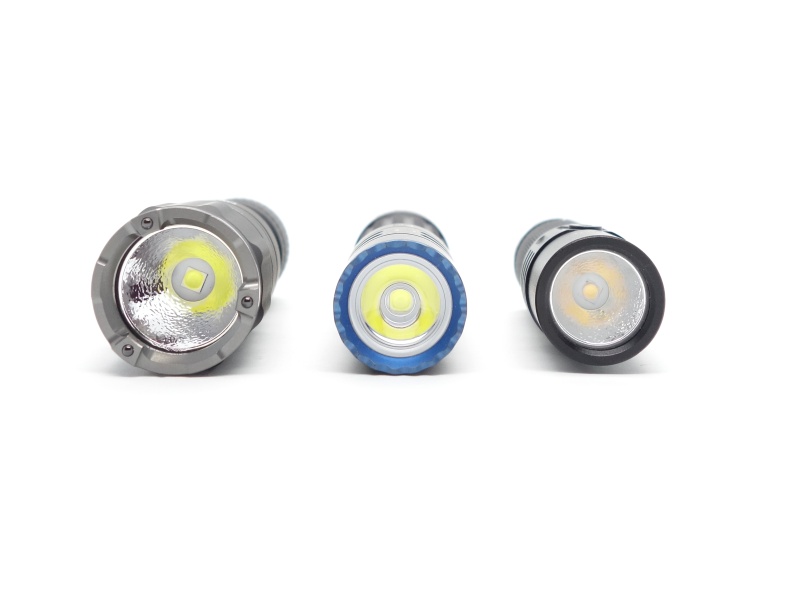
User interface⌗
The head of the torch has a mode selection rotary switch to select Tactical Mode, Duty Mode or Lock Mode.
The tail button has two stages. It can be lightly pressed or it can be fully pressed.
| Mode | State | Action | Result |
|---|---|---|---|
| TAC | Off | Press button lightly | Momentary High |
| TAC | Off | Press button fully | Momentary Strobe |
| DUTY | Off | Press button lightly | Momentary High |
| DUTY | Off | Press button fully | High |
| DUTY | On | Press button lightly | Cycle (High, Medium, Low, Strobe) |
| DUTY | On | Press button fully | Off |
| LOCK | Off | Press button lightly | Nothing |
| LOCK | Off | Press button fully | Nothing |
Strobe⌗
Strobe has an alternating frequency.
Low voltage protection⌗
There is no low voltage protection built into the torch for a Li-ion cell.
I tested low voltage protection by connecting the torch to a bench power supply and then by lowering the voltage from 4.2V to 0V for a 16340 Li-ion cell.
I do not recommend using an unprotected 16340 Li-ion cell. It might discharge to 0V if the torch has been left on.
The included protected 16340 Li-ion cell appears to have low voltage protection.
PWM⌗
I did not notice any visible PWM (flickering).
What I like about the UI⌗
- I like how the rotary switch has a Lock Mode.
- Two stage button (light and full press).
What could be improved⌗
Tactical Mode is limited to two momentary modes (High and Strobe). It would be nice if long pressing lightly or long pressing fully resulted in the torch turning on in High and Strobe instead of it turning on momentarily and turning off when the button has been released.
Duty Mode has a High-Medium-Low-Strobe cycle where it defaults to High. It would be nice if this mode was more EDC friendly. For example: Low-Medium-High cycle with it defaulting to Low. Double light press for High. Triple light press for Strobe.
Batteries and charging⌗
Battery⌗
A button top NEXTORCH 16340 800mAh cell with USB-C charging was included inside the torch. The cell arrived with a voltage of 3.66V, and it was isolated with a piece of plastic.
I tried the following cells:
| Cell | Top | Compatible? | Comment |
|---|---|---|---|
| NEXTORCH 16340 Li-ion 800mAh 3.6V USB-C | Button | Yes | |
| Sofirn 16340 Li-ion 800mAh 3.7V | Button | Yes |
Charging⌗
The indicator LED went red while charging and it went blue when charging was complete.
Power supply: PinePower Desktop USB-C
USB Meter: AVHzY CT-3 (recommended by LiquidRetro)
Room temperature: 22 C
I charged the cell with its built-in USB-C charger from 2.94V to 4.18V. Charging completed after 2 hours. The charging rate was approximately 5V 0.5A.
Power supply compatibility⌗
I tried the following power supplies with the built-in USB-C charger:
| Power supply | USB Type | Protocol | Does it charge? |
|---|---|---|---|
| Apple 61W Power Adapter | USB-C | PD | No |
| Google Pixel Power Adapter | USB-C | PD | Yes |
| PinePower Desktop | USB-C | PD | No |
| PinePower Desktop | USB-A | QC | Yes |
| PinePower Desktop | USB-A | Yes |
Performance⌗
Specifications from the manual:
Tactical Mode
| ANSI / PLATO-FL1 | Momentary on | Tactical Strobe |
|---|---|---|
| Output (lumens) | 1,000 | 1,000 |
| Runtime | ||
| Beam Distance (metres) | ||
| Beam Intensity (cd) |
Duty Mode
| ANSI / PLATO-FL1 | High | Medium | Low | Strobe |
|---|---|---|---|---|
| Output (lumens) | 1,000 | 190 | 24 | 1,000 |
| Runtime | 1h 15min | 2h 30min | 24h | |
| Beam Distance (metres) | 210 | 85 | 30 | |
| Beam Intensity (cd) | 11,028 | 1,808 | 228 |
Lumen measurements⌗
I used a bench power supply to measure the current at turn on for Low, Medium and High.
| Mode | Amps at start | Specs | Lumens @turn on | Lumens @30 sec | Lumens @10 min |
|---|---|---|---|---|---|
| Low | 0.07 A | 24 | 25 | 25 | 25 |
| Medium | 0.49 A | 190 | 188 | 181 | 165 |
| High | 3.21 A | 1,000 | 1,115 | 974 | 235 |
Standby drain⌗
14.2 µA
I used a UNI-T UT139C digital multimeter to measure the current.
Runtime graphs⌗
I used my own DIY lumen tube with a TSL2591 sensor and forked bmengineer’s project RuTiTe to record runtimes.
Note: Lumen measurements may be off by 10% with my DIY lumen tube.
The room temperature was approximately 25 C.
Runtime⌗
Here is a summary of the runtime results:
| Mode | User manual | Runtime result | Turn off | Final voltage |
|---|---|---|---|---|
| High | 1h 15min | 1h 26min 13s | 1h 31min 26s | 2.94V |
| Medium | 2h 30min | 2h 42min 8s | 2h 42min 8s | 3.25V |
| Low | 24h | 22h 51min 9s | 22h 51min 9s | 3.04V |
“Runtime” is the time until the output reduces to 10% of the output at 30 seconds (as per the ANSI/PLATO FL1 2019 Standard).
“Turn off” is the time until my DIY lumen tube no longer detects more than 1 lumen.
“+” indicates that the light remained on after recording had stopped.
The runtime results were slightly better than expected for High and Medium. Low finished earlier than expected at 22h 51min 9s instead of 24 hours.
Throw⌗
I took lux measurements with a UNI-T UT383BT at 30 seconds. Low, Medium and High were measured at five metres.
| Mode | Specs (cd) | Specs (m) | Candela measured (cd) | Distance (m) |
|---|---|---|---|---|
| Low | 228 | 30 | 225 | 30 |
| Medium | 1,808 | 85 | 2,050 | 90 |
| High | 11,028 | 210 | 12,150 | 220 |
Beamshots⌗
I went to a local park and aimed the NEXTORCH TA20 at a tree 70 metres away while using High.
Beamshots were taken using a Sony RX100M2 using 3.2", f3.2, ISO 100, 5000K WB.
NEXTORCH TA20 (High)⌗
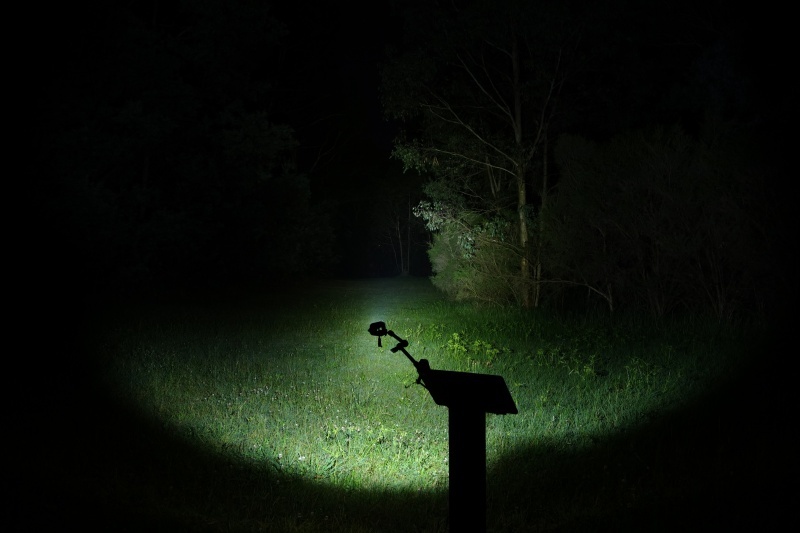
Olight Warrior Nano (Turbo)⌗
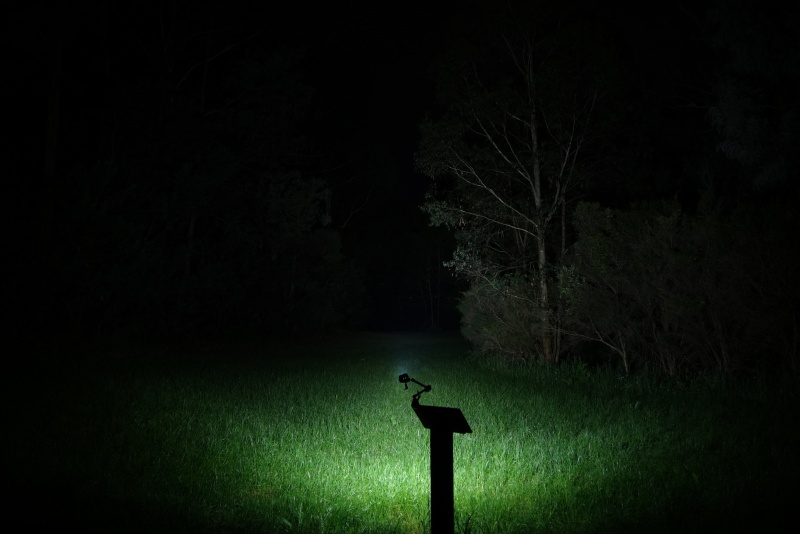
Sofirn SC21 (Turbo)⌗
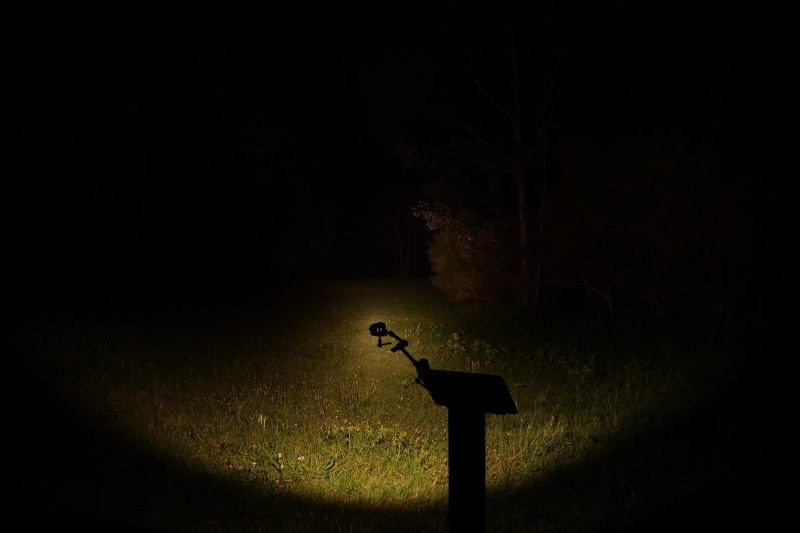
Conclusion⌗
The NEXTORCH TA20 is a good compact tactical torch.
The user interface provides direct access to High by lightly pressing the button while in Tactical or Duty modes.
The TA20 is definitely intended for law enforcement and military use.
I might consider this an EDC torch if the user interface defaulted to Low in Duty Mode but it defaults to High. Honestly, something like the Olight Warrior Nano has a better user interface for the general public where they may want to carry a small EDC torch.
I would recommend the TA20 if you want a compact tactical torch as a backup. But the TA30C is so much better.
Pros:⌗
- Excellent build quality.
- Runtime is better than expected for High and Medium.
- Beam distance is as advertised.
- Beam is wide enough to light up a room.
- 16340 battery has USB-C charging.
Cons:⌗
- The USB-C charger in the 16340 battery didn’t work with some USB-C PD power supplies.
- The strike bezel interferes with the beam pattern.
- No low voltage protection built into the torch (the battery has protection).
Price⌗
The NEXTORCH TA20 is about US$89 at the time of writing.
Product page⌗
Promo code: TIM
TA20 at nextorch.com (affiliate link)
TA30C nextorch.com (affiliate link)
I may earn a commission if you use an affiliate link or a promo code. This will help fund future torch reviews and tutorials.
